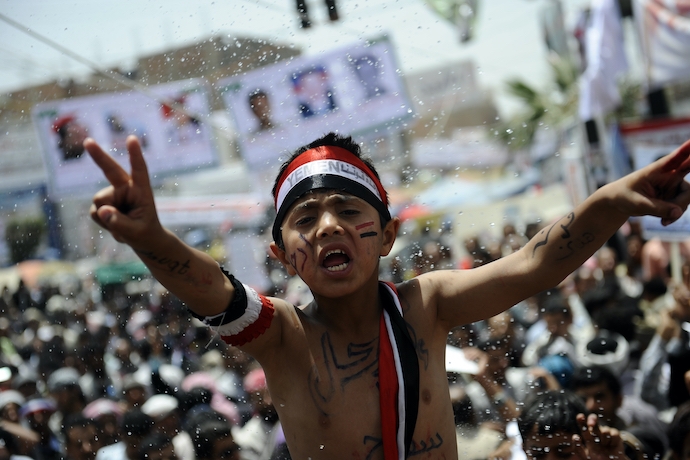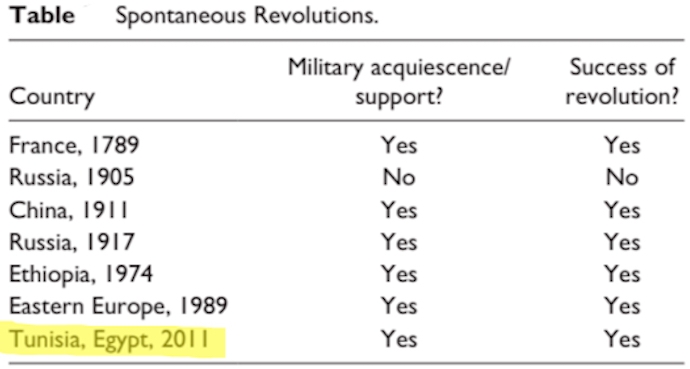
The Socio-Political Spark of Arab World Revolutions: Middle Class, Inequality, and Power
The Arab world is at a crossroads, facing difficult challenges as well as enormous opportunities that can lead to either a progressively refining democratic path or an authoritarian retrenchment. Many of the aspects of the modern Arab rebellions are perplexing and do not easily fit with prevalent intellectual frames. Given the political vicissitudes that have taken place in Arab countries over the past few years and the appearance of new socio-political powers, it is now essential to reassess the middle class and examine where it fits in among new social forces.
However, figuring out and calculating who has middle-class status in the Arab world is not a straightforward task due to the shortage of survey data for the analysis of consumption patterns over the long term. Most studies of the middle class undertaken in Arab countries during the last ten years have focused on political behavior over consumption patterns, knowing that the Marxist socialist measure takes cultural factors, social activities, and political engagement into account, but generally disregards consumption patterns.
Considering economic data alone, the revolutions of the 2011 Arab Spring should have never ensued. The numbers from the decades before had told a glowing story of progressive reforms and moderate economic growth. There were no apparent direct triggers such as declines in subsidies or shifts in foreign coalitions, unlike the 1990s when the welfare state had started being rolled back.
In fact, the findings of a World Bank study associate the low levels of happiness and broadly shared dissatisfaction in the area with perceptions about deteriorating living standards. People in the nations that became most involved in the Arab Spring- Egypt, Tunisia, Libya, Syria, and Yemen– were among the least content globally with steep deteriorations in subjective wellbeing in the region.

Usually, those who hold more pessimistic views about real changes in policymaking are less likely to participate in mass political action. Poor, vulnerable individuals do not have sufficient knowledge about their actual status in society and tend to believe that they are closer to the median than they actually are. As a result, the underprivileged wrongly believe many more people would be as gloomy as they are, which further prevents them from demanding basic human rights.
Until recently, Middle Eastern scholars did not seem to believe that the middle-income group could play an active role in leading radical change. This category has actually been on the front lines of opposition to abuses of power, whether by authoritarian or democratic regimes, throughout modern history. Up since the 1930s, the Arab middle classes have become a medium of grand ideologies- they were the support base for Arab socialism and nationalism, as well as political Islam. The lower and, not surprisingly, upper classes are indeed notably less expected to partake in demonstrations against governments than those in the middle social strata.
It is often emphasized that this class is of major political importance for democratic transformation processes, which explains why the revolutions started in Tunisia and Egypt- the countries with some of the highest economic growth in the region- rather than in countries such as Syria or Yemen where the economic conditions have been more calamitous and political repression more severe. Economic security can thus lead to extremist behavior and attitude amongst the middle classes.
It seems economic issues were central to the Arab Spring. Returning to past policies, the Arab world needs to consider a change in economic strategies, focusing on inclusive growth- that is, growth that expands the middle class, enhances social justice, and increases opportunities for all citizens.
Middle-class people want not just security for their families but choices and opportunities for themselves as well. As in the case of the rigid Tunisian and Egyptian governments that were classic crony-capitalist regimes, economic opportunities depended heavily on political connections. Such regimes of unequal capitalism are perceived to have produced deplorable inequalities, directly by supporting the development of a class of super-rich, and indirectly by being incapable of generating sufficient decent jobs for the newly educated middle class. Neither country, on any occasion, had grown fast enough economically to offer occupations for ever-larger cohorts of young individuals. The result was a drastic rebellion.
Revolutions and revolts often result from an unfortunate and not always predictable chain of historical events. Established more than two hundred years ago, studies on such matters from various disciplines have demonstrated that, as a rule, revolutions are condemned to failure. Whether they succeed or not depends on the constancy and forte of intermittent alliances forged between the groups and social classes supporting the cause.
In contrast, the military guarantees protection, security, and stability. The ongoing bloody conflict in Syria, for example, is to be interpreted along precisely the same lines; as a discursive battle between the regime and the rebel groups, each trying to gain the support of the middle classes.
 As the table shows, no acquiescence or support of the military, no fruitful spontaneous revolution. It should be still noted that the success of any uprising comes only after its commencement. Gizachew Tiruneh explains that “although the timing between the initial popular rebellions and the support of the armed may not be very long in spontaneous revolutions, it is mainly the people, not military, who begin those.”
As the table shows, no acquiescence or support of the military, no fruitful spontaneous revolution. It should be still noted that the success of any uprising comes only after its commencement. Gizachew Tiruneh explains that “although the timing between the initial popular rebellions and the support of the armed may not be very long in spontaneous revolutions, it is mainly the people, not military, who begin those.”
It is now clear that a modern middle class causes political ferment, but only rarely has it been able, on its own, to bring about permanent democratic modification. This is because this class seldom represents more than a minority of the society in developing countries and itself internally divided. Unless they can form a coalition with other fragments of society, middle-class movements hardly ever produce enduring political transformation. The outcome of the Arab revolts eventually testifies to just how difficult it is to unify the divergent voices and demands into a joint political message.
Yet, it remains enticing to make inequality a central operator to the comprehension of the Arab Spring. Conventional wisdom has it that youth unemployment was the main driver of the uprisings, which brought issues of equity and inclusion to the fore. Theoretically speaking, income inequality upsurges the level of corruption through material and normative mechanisms. Jong-sung You argues that “the wealthy have both greater motivation and more opportunity to engage in corruption, whereas the poor are more vulnerable to extortion and less able to monitor and hold the powerful accountable as inequality increases.”
A renewed Arab Spring is still far away- maybe years, maybe decades. But comparable uprisings will continue to recur. The socio-economic circumstances at the root of the revolution ten years ago are now more severe, not least because of the pandemic. And politically, tensions of entrenched elites trying to surpass public voice and involvement will generate periodic crises. This struggle for power will likely remain.

